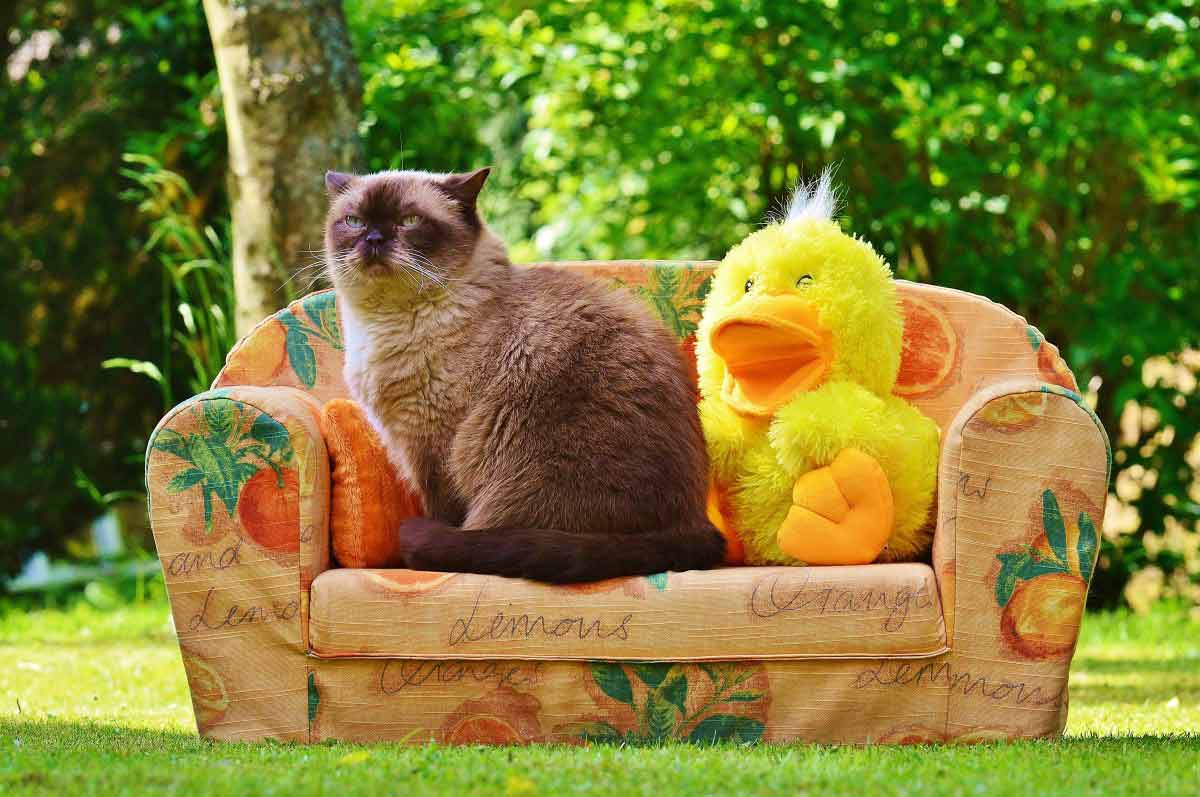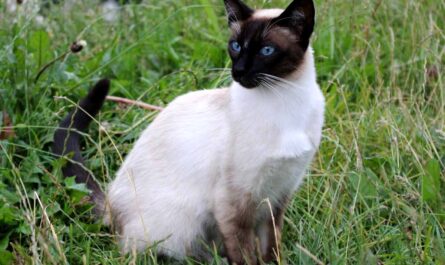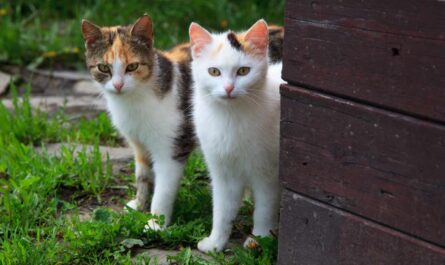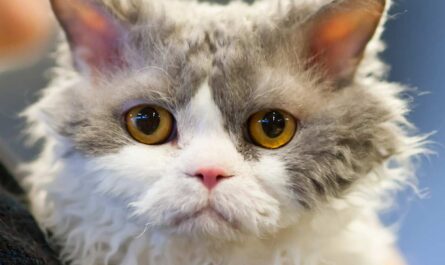Domesticated cats and big cats: What are some similarities and differences? It might seem inconceivable to envision your spoiled domestic feline engaged in activities beyond leisurely napping on your lap or issuing regal demands for gourmet meals served on a fine porcelain platter. However, despite the stark contrast in lifestyle, the seemingly pampered house cat surprisingly shares a plethora of characteristics with its untamed counterparts prowling the vast expanses of the wild.
A Parallel Existence: House Cats and the Majesty of Big Cats
In the untamed domains, where the grandeur of the wilderness reigns supreme, lions, snow leopards, jaguars, and cheetahs epitomize the essence of wildness and self-sufficiency. Astonishingly, the ten-pound tabby lounging on your living room rug harbors an unexpected kinship with these majestic beasts that roam free in distant landscapes.
Beyond the Porcelain Plate: Unveiling the Wild Within Domesticity
Contrary to the image of a docile house cat lounging idly, the domestic feline conceals a myriad of instincts reminiscent of its formidable relatives. Beyond the confines of your cozy home, the wilderness echoes with the roars of mighty lions, yet the genetic echoes resound even in the seemingly mundane meows of your beloved pet.
Untamed Traits in the Lap of Luxury: A Closer Look
Picture this: a snow leopard stealthily navigating treacherous terrains in the Himalayas. Now, juxtapose that with the nimble grace your house cat exhibits during a clandestine midnight exploration through the dimly lit corridors of your residence. The parallels between these seemingly disparate scenes underscore the deeply ingrained primal behaviors shared across feline species.
The Stealthy Stalk: A Common Thread
Whether it’s the stealthy approach of a jaguar on the prowl or the deliberate, measured steps of your domestic cat as it stalks an unsuspecting insect, the common thread is undeniable. The predatory instinct, finely tuned through eons of evolution, weaves a narrative that transcends the boundaries of captivity and wilderness, creating a tapestry that links the seemingly distinct worlds of big cats and their diminutive domestic counterparts.
Purring Echoes: A Universal Language
In the silence of the wild, the resonance of a lion’s mighty roar reverberates through the savannah. In the quietude of your home, the gentle purring of your contented house cat communicates a language of comfort and security. While the scale may differ, the essence remains an instinctual expression that bridges the gap between the untamed and the domestic, unraveling the mystique of feline kinship.
The Enigmatic Connection: Exploring the Feline Tapestry
As you observe your house cat lazing in the afternoon sunlight or witness the breathtaking footage of a cheetah sprinting across the African plains, the intricate connection between these disparate scenes becomes apparent. The feline tapestry, woven through shared traits, instincts, and behaviors, transcends the apparent dichotomy of domesticity and wildness, creating an enigmatic connection that underscores the awe-inspiring unity of the feline world.
Domesticated Cats And Big Cats: 11 Similarities
The parallels between domesticated cats and big cats extend beyond mere physical resemblances, delving into the intricate realms of behavior, communication, and survival strategies. While one may lounge on a living room couch and the other roam the untamed wilderness, the shared essence of being a feline creature forms an unspoken bond that transcends the boundaries of size and domestication, weaving a tapestry of interconnected lives shaped by the threads of evolution.
1. Carnivorous Diets and Dietary Preferences
In the realm of gastronomy, the carnivorous essence of cats, both domestic and wild, stands as a defining characteristic that transcends the boundaries of size and domestication. From the domestic tabby relishing a bowl of kibble to the mighty tiger making a feast of its prey in the heart of the jungle, the dietary preferences of cats remain rooted in their carnivorous heritage. The specialized teeth and digestive systems tailored for a meat-centric diet serve as a testament to the evolutionary legacy that shapes their nutritional needs—a shared trait that echoes through the corridors of time, binding domestic cats and big cats in a carnivorous symphony.
2. Flexibility and Agile Movements
In the realm of physical prowess, a shared attribute that links domestic cats and big cats is their extraordinary flexibility and agile movements. The lithe grace with which a domestic cat contorts its body to slip through a narrow opening finds an echo in the sinuous movements of a leopard navigating the dense underbrush. The unparalleled flexibility of their spines, coupled with a mastery of balance and coordination, allows both domestic and big cats to move with a fluidity that defies the constraints of their physical form. This shared physical prowess, honed through evolution, speaks to the common ancestry that courses through the veins of feline beings, irrespective of their size or domestication status.
3. Territorial Instincts and Marking Behaviors
A fundamental trait deeply ingrained in the feline psyche is the instinct to mark and claim territory. Whether the confines of a quaint living room or the sprawling expanse of a savannah, cats, big and small, manifest an unyielding urge to delineate their turf. Domestic cats, with a more confined domain, mark their territories through subtle scent glands and strategic scratching. On the flip side, their larger kin, the big cats, employ a more conspicuous approach, leaving behind bold visual markers such as claw-marked trees and distinctive scents to broadcast their territorial authority. This primal inclination towards territorial ownership serves as a common thread that binds these diverse feline species.
4. Predatory Prowess and Hunting Techniques
Embedded in the genetic fabric of all cats, domestic or wild, is an unparalleled predatory prowess that transcends the boundaries of captivity. The lithe grace with which domestic cats stalk a fluttering feather toy mirrors the stealthy approach of their big cat counterparts in the wild. The innate hunting techniques, from the mesmerizing gaze that fixates on prey to the lightning-quick pounce, bridge the evolutionary gap between housecats and their majestic relatives. While the scale of their prey may differ, the underlying predatory instincts persist, highlighting an undeniable similarity that transcends the confines of domestication.
5. Nocturnal Navigators and Crepuscular Creatures
As twilight descends, an enchanting transformation unfolds in the world of cats, underscoring their shared affinity for the shadows of the night. Whether it be the domestic tabby prowling through the moonlit garden or the elusive panther navigating the dense nocturnal jungle, both domestic and big cats are inherently crepuscular creatures. This shared inclination towards the mysterious hours of dawn and dusk stems from an evolutionary adaptation that aligns with the optimal times for hunting and surveillance. The feline eyes, equipped with specialized adaptations for low-light vision, come alive during these dimly lit hours, weaving a narrative of nocturnal prowess that binds domestic cats and big cats in a tapestry of shared instincts.
6. Instinctual Responses and Adaptive Behaviors
Embedded within the very core of a cat’s being are instinctual responses and adaptive behaviors that form the bedrock of their survival strategies. Whether it be the lightning-quick reflexes of a domestic cat swatting at a feathered toy or the decisive maneuvers of a cheetah closing in on its prey, the commonality lies in the instinctual wellspring that fuels these actions. The adaptability to diverse environments, strategic problem-solving, and innate ability to read the subtle cues of their surroundings weaves a narrative of resilience that echoes through the ages, connecting the intricate tapestries of domesticated cats and their untamed counterparts in the wild.
7. Social Structures and Hierarchies
When delving into the realm of feline societies, whether in the cozy confines of our homes or the vast expanses of the wild, one cannot overlook the intricate social structures that define these enigmatic creatures. Domesticated cats, despite their refined indoor demeanor, share a striking resemblance with their larger counterparts in the wild when it comes to establishing hierarchies within their social groups. Both domestic and big cats exhibit a nuanced system of dominance and submission, where the intricacies of interactions go beyond mere physical prowess. The subtle cues exchanged through body language and vocalizations form the tapestry of their social dynamics, weaving a narrative of intricate relationships that mirror the complexity of their wild ancestors.
8. Vocalizations and Communication
Beneath the veil of silence that often shrouds the feline world, a rich tapestry of vocalizations and communicative cues unravels. From the subtle purrs of contentment to the spine-chilling roars reverberating through the wild, both domestic and big cats communicate through a diverse range of vocal expressions. The nuanced language of meows, chirps, and growls serves as a means of conveying emotions, signaling intentions, and establishing social bonds. This intricate web of communication, shaped by evolutionary forces, transcends the confines of domestication, echoing the primal echoes that resonate through the dense canopies of the wild.
9. Grooming Rituals and Fastidious Cleanliness
In the meticulous grooming rituals that punctuate a cat’s daily routine, a shared commitment to fastidious cleanliness emerges as a common trait between domestic cats and their larger counterparts. Whether it be the domestic tabby meticulously licking its fur or the regal lioness diligently tending to her mane, the act of grooming transcends mere hygiene; it symbolizes a profound dedication to self-care. Beyond the surface-level aesthetics, these grooming rituals play a crucial role in maintaining health, fostering social bonds, and affirming a sense of well-being—an embodiment of the intrinsic connection that binds all feline creatures, big and small.
10. Solitary Streak and Independence
In the tapestry of feline personalities, a common thread of independence and a solitary streak weaves its way through both domestic and big cats. While domestic cats may snuggle on a cozy couch or curl up on a sunny windowsill, the echoes of their wild ancestors resonate in their preference for solitary respites. Similarly, big cats, despite forming temporary alliances for hunting or mating, often embrace a solitary existence. This inclination towards independence, forged through evolutionary pressures, underscores the essence of feline nature—a duality that unites the seemingly disparate worlds of the domestic hearth and the untamed wilderness.
11. Playful Pursuits and Eternal Curiosity
Beneath the veneer of regal poise and enigmatic aloofness, a vibrant undercurrent of playfulness and eternal curiosity courses through the veins of all feline beings. Domestic cats, with their acrobatic leaps and whimsical pounces, share a common thread with their big cat counterparts who engage in playful pursuits, refining their skills and instincts. The ever-curious nature, whether exhibited in the batting of a yarn ball or the agile maneuvers in a jungle clearing, serves as a testament to the perpetual allure of the unknown—a trait that unites domesticated companions and their majestic wild kin in a dance of feline fascination.
:strip_icc()/GettyImages-140000553-5bd2454846e0fb0051a52178.jpg)
Domesticated Cats And Big Cats: 13 Differences
The cuddly tamed house cats we enjoy today are descended from lions and tigers, which were the progeny of early predators known as miacids. Modern wild cats developed from here into three major species: the European wild cat, the African wild cat, and the Asiatic desert cat. Domesticated cats are said to be descended from an early form of wildcat in Egypt and are more closely linked to the puma or lynx than to the lion or tiger. Continue reading to find out more about the remarkable parallels between huge cats and our cuddly domesticated pals.
1. Living Environment
As creatures of distinct habitats, domestic cats and big cats inhabit vastly different domains. The domestic cat, akin to a quintessential homebody, thrives in the coziness of residential spaces, sharing their lives with human companions. Nestled in living rooms or perched on window sills, these feline confidants embrace the comfort and security afforded by domesticity. Contrarily, big cats traverse the expansive landscapes of the wild, their territories extending across savannas, jungles, and dense forests. The vastness of their natural habitats becomes an intrinsic facet of their existence, embodying the essence of untamed freedom that domestic cats seldom encounter within the confines of human abodes.
2. Dietary Disparities
The culinary predilections of domestic cats and big cats unravel another layer of divergence within the feline narrative. Domestic cats, beneficiaries of human care, partake in a diet typically comprising commercially available cat food or a concoction of protein-rich delights. The meticulous balance of nutrients tailored to their domestic lifestyles ensures optimal health and vitality. Conversely, big cats, entrenched in the rigors of the wild, adhere to a more primal menu. Their sustenance hinges on a carnivorous palette, with ungulates and other prey forming the crux of their diet. The very act of hunting and the pursuit of prey amplify the visceral nature of their survival, setting them apart from their domesticated counterparts.
3. Lifespan Discrepancies
Life’s ephemeral dance plays out with varied tempos for domestic cats and big cats, encapsulating the essence of mortality within distinct timeframes. Domestic cats, beneficiaries of veterinary care and the sheltered embrace of homes, typically enjoy longer lifespans, often reaching into their teens and, at times, surpassing two decades. In the wild, the narrative shifts dramatically for big cats. Their lives unfold amidst the ceaseless rhythms of nature’s harsh ballet, where survival hinges on a delicate equilibrium. Consequently, the lifespan of big cats often hovers around a decade or slightly more, marked by the relentless challenges posed by predation, environmental factors, and the intricacies of the wild.
4. Human Interaction
The dichotomy in human interaction with domestic cats and big cats underscores the varying roles these feline entities play in our lives. Domestic cats, often regarded as beloved companions, weave themselves into the fabric of human routines, offering solace, amusement, and companionship. The intimacy of shared spaces and the reciprocity of affection form the bedrock of the human-domestic cat bond. In contrast, human interaction with big cats transcends the realms of companionship. Big cats, residing in sanctuaries, zoos, or the wild, evoke a sense of awe and respect, with encounters leaning towards educational and conservation narratives. The dynamics of coexistence between humans and big cats reflect the delicate balance between admiration and the imperative to preserve these majestic creatures and their habitats.
5. Reproductive Strategies
The realm of reproduction unfurls distinct strategies for domestic cats and big cats, each shaped by the exigencies of their respective environments. Domestic cats, influenced by human interventions, may undergo controlled breeding or reproduction in the wild abandon of nature. The familiar scenes of household litters and the nurturing care of domestic queens stand in stark contrast to the more primal and often solitary reproductive pursuits of big cats. In the wild, mating rituals, courtship displays, and territorial imperatives intertwine, weaving a narrative of procreation that echoes through the untamed expanses.
6. Size Disparity
When it comes to the realm of feline companionship, a palpable divergence emerges between domesticated cats and their larger counterparts, the big cats. In the grand tapestry of nature, domestic cats, adorned with an endearing petite stature, often tiptoe around our homes with almost balletic grace. Their dimensions typically range from a diminutive six to 16 pounds, rendering them an ideal fit for household living. Contrastingly, the majestic big cats, dwelling in the wild expanses, manifest an awe-inspiring magnitude that dwarfs their domestic kin. The likes of lions, tigers, and leopards command a regal presence, with weights soaring to several hundred pounds, embodying the epitome of wild, untamed magnificence.
7. Behavioral Dispositions
Delving into the intricate nuances of behavior, a chasm separates the domesticated feline companions from their formidable big cat brethren. Domestic cats, in their cozy abodes, exude a familiarity rooted in their symbiotic relationship with humans. These smaller feline compatriots, known for their playful antics and affectionate purrs, often forge deep bonds with their human counterparts. On the flip side, big cats encapsulate an unbridled wilderness in their demeanor. Their behavior echoes the untamed rhythms of the wild, characterized by predatory instincts, territorial assertiveness, and a relentless quest for survival. The juxtaposition between the domestic cat’s sociable charm and the big cat’s primal nature paints a vivid tableau of the diverse feline spectrum.
8. Vocalization Variances
In the symphony of feline communication, the divergence in vocalization between domestic cats and big cats becomes apparent. Domestic cats, endowed with a repertoire of meows, purrs, and occasional yowls, engage in a nuanced dialogue with their human companions. These vocal expressions convey a spectrum of emotions, from the plaintive meow seeking attention to the contented purr during moments of repose. On the contrary, big cats echo through the wilderness with a set of roars, growls, and chuffing sounds that transcend mere communication—they serve as primal proclamations of dominance, territorial delineation, and mating rituals. The auditory realms of domesticity and the wild thus resound with distinct feline dialects.
9. Coat Characteristics
Aesthetic disparities in coat characteristics further distinguish domestic cats from their larger counterparts. Domestic cats, with their diverse breeds and coat patterns, serve as canvases for creative genetic expressions. Whether adorned with the sleek elegance of a Siamese cat or the luxuriant fluffiness of a Persian, these feline companions exemplify the manifold possibilities within the realm of domestication. In contrast, big cats exhibit a more utilitarian and camouflaging palette. Their coats, marked by spots, stripes, or solid hues, epitomize the evolutionarily honed art of blending into their natural surroundings—an adaptation essential for stalking prey and evading potential threats.
10. Cultural Significance
The cultural tapestry of human societies weaves varied threads around domestic cats and big cats, each contributing distinct hues to the rich fabric of symbolism and significance. Domestic cats, embedded in folklore, art, and literature across civilizations, often embody qualities of mystery, independence, and companionship. They traverse the realms of superstitions and adoration, earning a revered place in the collective human psyche. Conversely, big cats, revered as symbols of power, majesty, and prowess, adorn the mythologies and heraldic emblems of cultures worldwide. The cultural significance of big cats extends beyond mere symbolism, encapsulating a primal reverence for nature’s grandeur and the wild forces that shape our collective consciousness. See why thousands of cats love BoxCat
11. Social Structure
In the intricate tapestry of feline societies, the contrast between domestic cats and big cats extends to their social structures. Domestic cats, often characterized by a more solitary disposition, navigate their human-centric realms with a degree of independence. While they may form close bonds with their human caregivers, the need for personal space remains ingrained. In contrast, big cats unveil a more complex social tapestry in their wild enclaves. Lions, for instance, exhibit a pronounced social structure with prides, fostering communal living and collaborative strategies for hunting and protection. The dichotomy between the individualistic tendencies of domestic cats and the communal dynamics of big cats underscores the diverse expressions of feline sociability.
12. Conservation Imperatives
The urgency of conservation paints a poignant contrast between domestic cats, flourishing within the secure folds of human care, and big cats, navigating the perilous precipice of endangered existence. Domestic cats, beneficiaries of domestication, thrive in environments shaped by human hands. Their populations, often bolstered by responsible pet ownership and sterilization programs, mitigate concerns of overpopulation. On the other hand, big cats, facing habitat loss, poaching threats, and human-wildlife conflicts, grapple with existential challenges. Conservation efforts become a critical lifeline for these majestic creatures, emphasizing the imperative to preserve their natural habitats and mitigate anthropogenic threats. Cat accessories on Amazon
13. Evolutionary Paths
The evolutionary trajectories of domestic cats and big cats unfold as divergent narratives shaped by the dual forces of domestication and the untamed wild. Domestic cats, sharing a symbiotic journey with humans over millennia, have undergone genetic adaptations that align with the dynamics of coexistence. The domestication process has sculpted traits that cater to the nuances of life within human abodes, marking a testament to the adaptability of felinity. In stark contrast, big cats stand as timeless sentinels of the wild, their evolutionary paths intricately woven into the tapestry of ecosystems. Their adaptations mirror the raw beauty of survival in landscapes untethered by human influence, a testament to the resilience of the feline essence in its purest, unbridled form.
Other Interesting Articles
- Cornish Rex Cat Breed: Profile, Traits, Health, Grooming, Care
- Colorpoint Shorthair Cat Breed: Profile, Traits, Grooming, Care
- Cheetoh Cat Breed: Profile, Traits, Health, Grooming, Care
- Chausie Cat Breed: Profile, Traits, Health, Grooming, Care
- Chartreux Cat Breed: Profile, Traits, Health, Grooming, Care
- Chantilly, or Tiffany Cat Breed: Profile, Traits, Grooming, Care
- Cymric Cat Breed: Profile, Traits, Health, Grooming, Care
- Dragon Li Cat Breed: Profile, Traits, Health, Grooming, Care
- Donskoy Cat Breed: Profile, Traits, Health, Grooming, Care
- European Shorthair Cat: Profile, Traits, Health, Grooming, Care
- German Rex Cat Breed: Profile, Traits, Health, Grooming, Care
- Havana Brown Cat Breed: Profile, Traits, Coats, Groom, Care
- Kurilian Bobtail Cat Breed: Profile, Traits, Coats, Groom, Care
- Korat Cat Breed Profile: Health, Traits, Coats, Groom, Care
- Javanese Cat Breed Profile: Health, Traits, Coats, Groom, Care
- Japanese Bobtail Cat Profile: Health, Traits, Coats, Groom, Care
- LaPerm Cat Breed Profile: Health, Traits, Coats, Groom, Care
- Manx Cat Breed Profile: Health, Traits, Coats, Groom, Care
- Nebelung Cat Breed Profile: Health, Traits, Groom, Care
- Norwegian Forest Breed Profile: Health, Traits, Groom, Care



